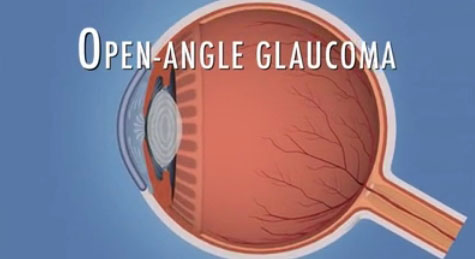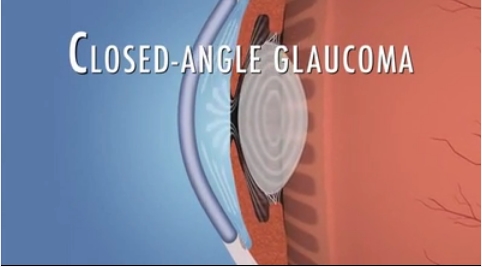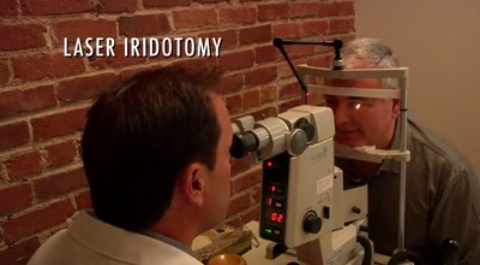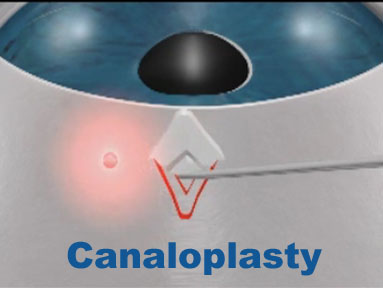Glaucoma
 Central Florida Eye Associates, LLC is a referral center for the diagnosis and management of glaucoma, the leading cause of blindness and visual impairment in the United States. One out of eleven Americans suffer from this disease, but only half are diagnosed. Glaucoma is a neurodegenerative disorder, which can affect patients of all ages. Most do not experience any symptoms until they have lost a significant amount of vision. With early detection and treatment, vision loss can be prevented.
Central Florida Eye Associates, LLC is a referral center for the diagnosis and management of glaucoma, the leading cause of blindness and visual impairment in the United States. One out of eleven Americans suffer from this disease, but only half are diagnosed. Glaucoma is a neurodegenerative disorder, which can affect patients of all ages. Most do not experience any symptoms until they have lost a significant amount of vision. With early detection and treatment, vision loss can be prevented.
Types of Glaucoma
There are many different types of glaucoma; but the two main categories are: open-angle and angle-closure glaucoma.
Open-Angle Glaucoma
 --/--
--/--Open-angle glaucoma is the most common category of glaucoma where the fluid in the eye drains too slowly through a drainage network known as the trabecular meshwork. The pressure in the eye increases as the fluid in the eye continues to build. Loss of vision occurs gradually and the vision loss is not always noticed until late stages. About 95 percent of glaucoma cases are due to open-angle glaucoma. Glaucoma can exist without elevated eye pressure.
Angle-Closure Glaucoma
 --/--
--/--Angle-closure glaucoma occurs when the trabecular meshwork is blocked by the iris which may cause periodic or sudden rise in the eye pressure. This condition requires prompt medical or surgical treatment. Lens replacement (or cataract) surgery and Laser Iridotomy (see video below) are the most effective ways to treat this condition.
Risk Factors for Glaucoma
- Family history of glaucoma
- High eye pressure
- African, Latino, or Asian descent
- the elderly
- Nearsighted or Farsighted
- Thin corneas
- Diabetes
- Eye injury history
- Regular use of cortisone/steroid products
Diagnosis of Glaucoma
To detect glaucoma, the physician will perform the following tests:
- Measure vision
- Perform a Visual Field test
- Eye pressure measurement
- Dilated-eye Examination
- Retinal evaluation
- Optic nerve evaluation
- Pachymetry (corneal thickness measurement)
- Gonioscopy (look at the drainage architecture of the eye)
- Optical coherent tomography (OCT)
Treatment of Glaucoma
Once glaucoma has been diagnosed, treatment should begin as soon as possible to help minimize the risk of permanent vision loss. Treatment is successful in most patients, but there is no cure for glaucoma. Treatment objective is prevention of any- or further damage to vision. Treatment for each individual case depends on the type and severity of the glaucoma. Some of the treatment methods for glaucoma are:
Medication
Eye drops or oral medication may be used to either reduce fluid production in the front of the eye or to help drain excess fluid. Side effects of the medication may result in redness, stinging, irritation or blurry vision. While glaucoma often has no symptoms, regular use of the medication is needed to keep the eye pressure under control.
Medication Instructions for Glaucoma
Laser Treatments

In-office Selective Laser Trabeculoplasty (SLT) and Laser Peripheral Iridotomy (LPI), with or without Laser Iridoplasty are used to treat open angle and closed angle glaucoma, respectively. These modalities primarily decrease eye pressure by enhancing fluid outflow. Endoscopic cyclophotocoagulation (ECP) and transcleral cyclophotocoagulation (TSCP) are laser treatment modalities that decrease eye pressure by decreasing fluid production and are performed in the operating room.
Surgery (Traditional & Modern)
We specialize in the medical and surgical management of glaucoma. Traditional glaucoma surgery include trabeculectomy and tube shunt placement.

Modern glaucoma surgeries are termed minimally invasive glaucoma surgery (MIGS).Canaloplasty, iStent, Trabectome,
and ECP are an incomplete list of various surgical MIGS approaches utilized to control glaucoma by decreasing the eye pressure. Central Florida Eye Associates, LLC is now the first and only provider of Canaloplasty in Orlando. Most approaches are designed to improve the outflow of fluid to lower the eye pressure. Surgery is usually performed after medication and laser treatments have been unsuccessful. Recently, cataract surgery has been classified as an effective means to lower the eye pressure.
Implications of Glaucoma
The prevention of irreversible and perceptible loss of vision due to glaucoma and other eye disorders is the ultimate goal of our professional lives. Rarely, we fail; and the patient has to live with the consequences. In an effort to maximize the patient’s quality of life we work with various organizations like the Light House of Central Florida, low vision specialists and occupational therapists to help visually disabled individuals live more productive lives. Glaucoma can not be prevented or cured, but it can be rendered irrelevant to our lives if it is managed properly by halting its progression.
The key to management of glaucoma is to:
- Get regular comprehensive eye examinations
- Avoid denial
- Follow the doctor’s recommended treatment plan
- Educate yourself about glaucoma
- Do not miss appointments
- See a specialist
TO LEARN MORE ABOUT OUR OPHTHALMOLOGY SERVICES, PLEASE CONTACT US AT 407.896.8990 TODAY TO SCHEDULE AN APPOINTMENT.
